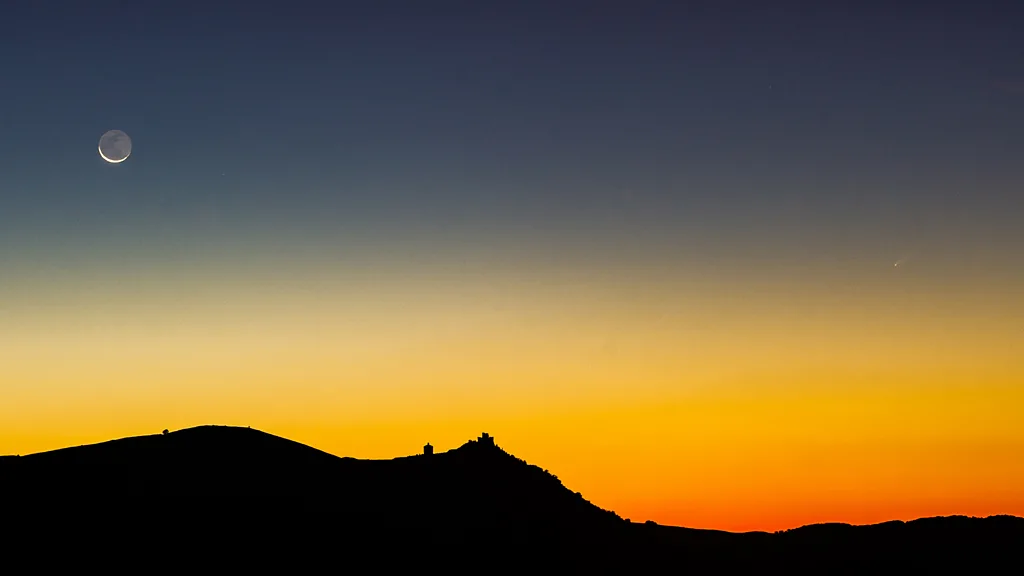
The Unique Environments of Alien Worlds Without Day and Night
On Earth, the presence of distinct days and nights has played a vital role in shaping the development of life. But many alien worlds, potentially capable of supporting life, might not have such clear cycles. How could the absence of day and night affect the evolution of life on these planets?
The Unique Environments of Alien Worlds Without Day and Night
Many potentially habitable alien worlds are likely tidally locked, meaning one side of the planet always faces its star while the other side remains in perpetual darkness. These worlds, known as M-Earths, orbit red dwarf stars, also called M-dwarfs, which are among the most common types of stars in our galaxy. A 2013 exoplanet survey found that 41% of M-dwarfs have planets in their “Goldilocks” zone, where liquid water might exist.
On these tidally locked planets, a year is as long as a day, with one hemisphere bathed in continuous sunlight and the other in constant darkness. Without a day-night cycle, these worlds lack the regular rhythms that have helped shape life on Earth. Unlike our planet, M-Earths have no distinct days, nights, or seasons, presenting a very different environment for potential life to evolve.
Tidally Locked Planets and Their Lack of Day-Night Cycle
A tidally locked planet’s environment contrasts sharply with that of Earth. Organisms on Earth rely on circadian rhythms—biological processes tuned to the day-night cycle—which impact everything from sleep to biochemical activity. The absence of a day-night rhythm raises questions about how life could adapt.
On Earth, some life forms thrive in environments devoid of light, such as cave systems, deep-sea environments, and underground habitats. These organisms provide insight into how life on alien worlds without day and night might function. Many deep-sea creatures and bacteria, for instance, have biological clocks synchronized with factors other than light, such as temperature and humidity variations or tidal currents. This suggests that life can develop alternative ways to adapt to environmental cycles even in the absence of sunlight.
How Evolution Might Differ on Alien Planets
On alien planets without day and night, evolution could take very different paths. For example, tidally locked planets may have extreme temperature contrasts between their day and night sides, which could lead to unique adaptations. Life on these worlds might synchronize with atmospheric changes, such as shifts in humidity, temperature, or pressure, rather than light. Some organisms could evolve biorhythms that align with natural cycles driven by other factors, such as geothermal activity or wind patterns.
Research has also suggested that the fixed positions of stars in the sky of tidally locked planets could lead to environmental variations that may mimic day-night-like cycles. Winds and atmospheric waves may generate temperature and weather fluctuations, providing cycles that organisms could evolve to adapt to. These cycles might not be related to the planet’s rotation but instead stem from interactions between clouds, winds, and atmospheric waves. Such a world could have beings whose biological rhythms are governed by these environmental changes rather than a traditional circadian clock.
Potential Life Strategies on Tidally Locked Planets
Life on tidally locked alien planets could evolve other interesting survival strategies. Some organisms may live primarily on the dayside, using the consistent sunlight for energy, while others may migrate periodically to the nightside to rest and regenerate. This movement could create a “circadian clock” defined by space rather than time. Alternatively, some life forms may have no need for rest at all, adapting instead to sustain activity without cycles of inactivity.
Just as life on Earth developed to adapt to light and dark, life on tidally locked worlds might evolve to thrive in environments that are constant but extreme. Temperature gradients, chemical differences, and local variations could all influence how life emerges and evolves in these unique environments. Understanding the potential for evolution on alien worlds without day and night cycles expands our perspective on the diversity of life that might exist beyond Earth.
The thought of life evolving without day-night cycles challenges our assumptions about how organisms function and adapt. While life on Earth is intricately tied to the rotation of the planet and the regular passage of time, the absence of such cycles on alien worlds could lead to unexpected and fascinating adaptations.
External Link: Read more at BBC
Internal Link: Explore more about extraterrestrial environments





